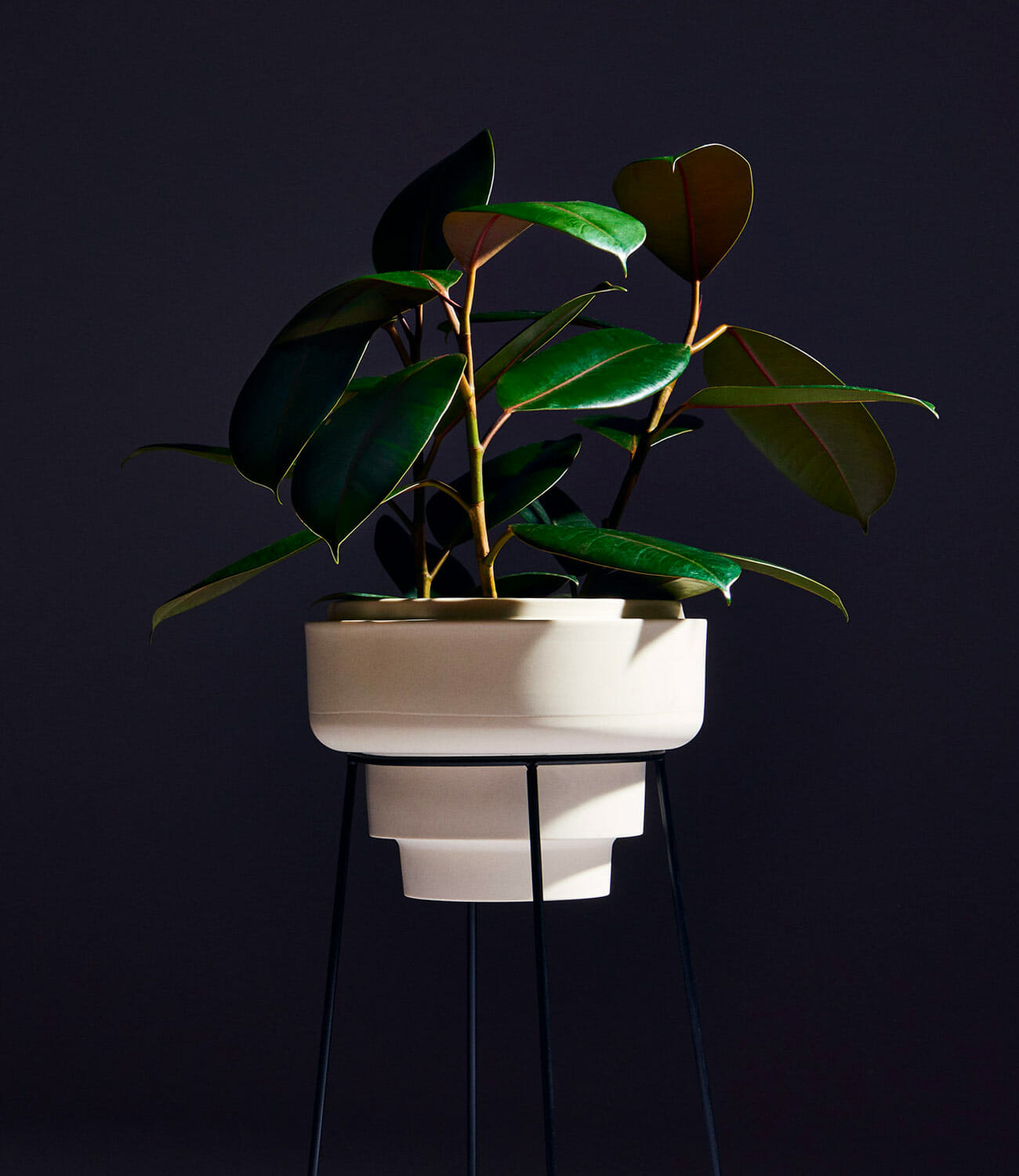We all love a good indoor plant. They brighten up spaces and make great company. Some may worry about giving their plants enough sunlight or water, but there’s one factor they may not consider regarding their plant’s longevity — the pot. If you’re keeping your plants in their nursery pots, you’re going to kill them.
Nursery pots are those plastic containers that plants usually come in when you first buy them. These pots are not meant for long-term plant storage as they will stunt your plant’s growth by compacting its roots. Even if you’ve already potted your plant once before, you might need to do so again once it outgrows its home. You wouldn’t wear the same sized shoes if your feet kept growing, would you? We asked Bloomscape’s director of plant programs, Joyce Mast, for some tips and a how-to on repotting your precious houseplants. Here’s what you need to know.
Pot Pointers
Buy the right-sized pot
Size matters when it comes to pots. Repotting plants is about giving its roots enough space to grow and thrive. According to Mast, you should choose a pot that is at most two inches larger in diameter. Any smaller and you’re wasting your time repotting; any larger and you’ll have too much soil, which will retain excess moisture and lead to bacteria growth.

Don’t waterboard your plants
Your pot needs a drain hole. Watertight pots won’t allow water to escape and you risk drowning your plant or promoting bacteria growth in the soil and plant’s roots. You don’t need to water you plant every day. As long as the soil remains somewhat moist, your plant will thrive. And when you do water, make sure all water drains through the drain hole before replacing it atop the saucer.
“Many retail stores do not wish to deal with the excess water while the plants are on display. This type of thinking sets up the customer for failure with their plants once they purchase and take home. In most cases, the plant is already dying a slow death because the roots are drowning and the new plant parent thinks they have done something wrong which is not the case,” Mast says.
Some believe you can add rocks on the bottom of a watertight pot and they’ll act as a draining system. They won’t. “Placing stones in a pot without a drainage hole is not the answer. It will only take a bit longer for the pot to fill with water causing the plant to die,” Mast says.
Always use fresh soil
You wouldn’t settle for sloppy seconds, and your plants won’t either. Mast says, “using fresh potting soil will ensure that your plants get a good nutrient boost.” A bulk-sized bag of potting soil shouldn’t cost too much, and it’s good to have on-hand for future repotting duties.

How to Repot Your Plant
1. Grab your new pot and fill a third of it up with fresh soil.
2. Carefully shimmy your plant out of its current pot. If you’re transferring out of a nursery pot, gently squeezing it can help dislodge the plant and its roots. Otherwise, gently shaking your plant from its current pot may help with extraction. Take scissors or pruning shears to dead or excessively long roots. Mast recommends using rubbing alcohol to clean the shears after each snip lest you spread bacteria from infected roots to good ones.
3. Center your plant in its new pot. The top of its root ball should be an inch below the top of the pot.
4. Add soil to the pot leaving an inch or two between the top layer of soil and the top of the pot. Light pack in the soil around the roots.
5. Give the plant a thorough watering so the water starts to flow from the pot’s drain hole. Allow to drain fully and place it on its saucer.

